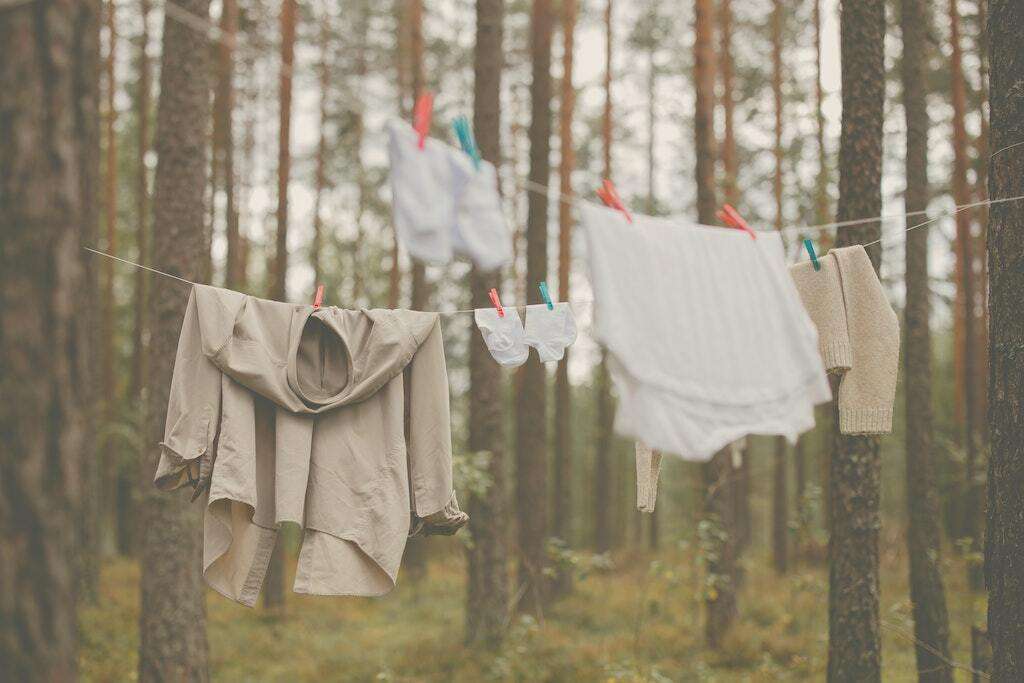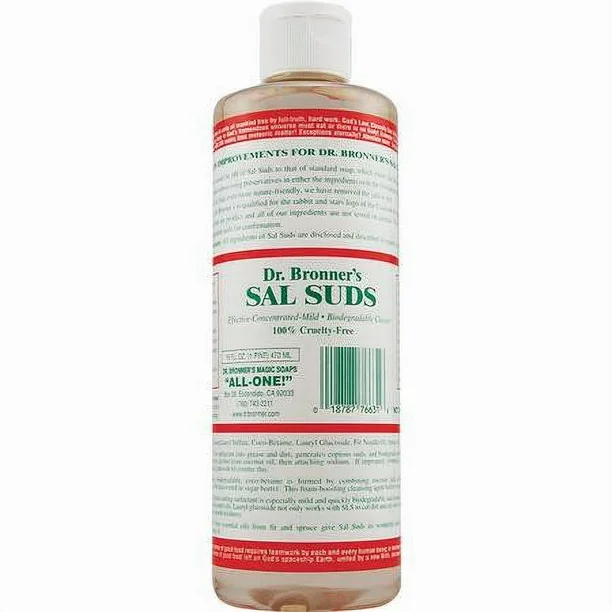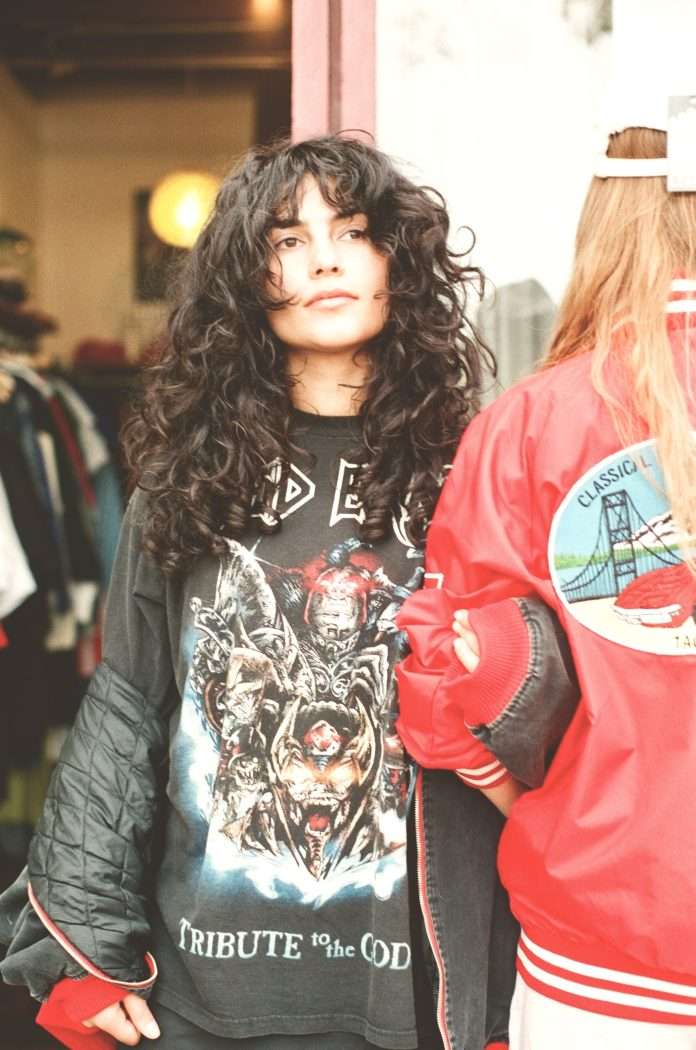Secondhand clothes shopping ticks all the boxes: unique finds, budget-friendly, planet-friendly. There’s just one stinker — literally. What’s that chemical fragrance smell on all of the clothes? And how do you get rid of it?
Shopping at secondhand stores can be an exciting treasure hunt, offering the chance to find unique clothing items at a fraction of their original price. It’s better for our wallets, certainly, but also better for the planet by keeping old clothes out of landfills and reducing production of new items. However, it’s not uncommon for these pre-loved finds to come with a distinct smell, often reminiscent of Febreze or other detergent-based fragrances used to mask odors. Understanding the origins of these odors and learning how to effectively remove them can make your secondhand shopping experience even more rewarding.
Do secondhand stores spray clothes with Febreze?
Because many secondhand stores, including Goodwill, don’t wash donated garments, they use various products like Febreze to freshen up clothing donations. These sprays are applied to make garments more appealing to shoppers by masking odors that can accumulate from storage, previous ownership, or the donation process. The use of these deodorizing products is a quick and cost-effective way for stores to manage inventory and maintain a safe shopping environment. However, these scents can linger and may not be to everyone’s liking. They can also be harmful to our health and the health of the planet. Higher-end resale stores like The RealReal or local vintage shops, may sterilize clothes with methods such as steamers or dry-cleaning techniques, rather than dousing the garments in chemicals.

There’s another odor common in vintage and secondhand stores often described as musty, attic-y, and generally “old.” According to Jolie Kerr, who had vintage store malodors analyzed for The New York Times in 2018, about 66 percent of the chemicals that make up that vintage scent were mainly body soils — skin, sweat, and body oils as old as the items up for sale. “Distressing!” Kerr wrote of the discovery. “But, perhaps, not nearly as distressing as the list of odor descriptors that accompanied the compounds. Sweet, sour, oily, herbal. Fatty. Whiskey, nutty, cheesy, sweaty. Stinky feet. Fermented. Bready.”
It’s easy to see why secondhand stores are pumping out the Febreze and other chemicals. It’s enough to send you to the mall to stock up on sterile new clothes — except, they’re covered in chemicals, too. So since we can’t run naked through the streets, secondhand still has more plusses in the pros column. Revitalizing secondhand clothes by removing odors and disinfecting them makes them more pleasant to wear and it also extends their lifespan, keeping them out of landfills and making your secondhand shopping more sustainable and enjoyable. With the right techniques, you can transform your thrifted treasures into fresh, clean additions to your wardrobe.
How to remove odors from used clothing
- Ventilation: The simplest way to start deodorizing your secondhand finds is by airing them out — literally. Hang the clothes outside on a sunny, breezy day. The combination of sunlight and fresh air can work wonders in reducing or eliminating unwanted smells.
- Baking Soda: For items that can’t be washed immediately or are delicate, a sprinkle of baking soda can help absorb odors. Lay the garment flat, sprinkle a light layer of baking soda on the fabric, and let it sit for a few hours before brushing off the powder.
- Vinegar Soak: White vinegar is a natural deodorizer. Soak your clothes in a mixture of one part vinegar to four parts water for about an hour. Then, wash them as you normally would. The vinegar smell will dissipate, taking other odors with it.
- Steam Cleaning: Steaming can help release odors trapped in the fibers of your clothes. If you don’t have a steamer, hanging clothes in the bathroom while you take a hot shower can achieve a similar effect.
- Activated Charcoal: For stubborn smells, placing the garment in a sealed bag or container with activated charcoal can help remove odors. The charcoal naturally absorbs smells, leaving your clothes fresher.
- Castile-Soap: This recommendation comes from Kerr who says the Dr. Bronner’s Castile-Soap is excellent at removing strong odors of all sorts from clothes. “I’ve recommended it for washing everything from hand-me-down baby clothes that smell strongly of perfume to coveralls that got soaked in gasoline, and it has worked every time,” she wrote.

How to disinfect
While removing odors is important, disinfecting secondhand clothes is equally crucial to ensure they are clean and safe to wear.
- Hot Water Wash: For durable fabrics, washing with hot water can kill bacteria and germs. Be sure to check the care label first to avoid damaging the garment.
- Disinfectant Laundry Additives: Products specifically designed to disinfect laundry can be added to your wash cycle. These are effective in eliminating bacteria that cause odors and potential skin irritation.
- Sunlight Exposure: Sunlight is a natural disinfectant. After washing, allow clothes to dry in direct sunlight, if possible. The UV rays can help kill remaining bacteria and viruses.
- Freezing: For items that can’t be washed or are too delicate, placing them in a sealed plastic bag and freezing for 48 hours can kill odor-causing bacteria. This method is gentle and effective for materials that may be damaged by heat or water.
Tips for maintaining freshness
- Store Properly: Ensure your clothes, especially secondhand finds, are stored in a clean, dry place. Moisture can lead to mold and mildew, which are difficult to remove.
- Use Sachets: Placing sachets filled with lavender, cedar chips, or other natural odor absorbers can keep your wardrobe smelling fresh.
- Regular Maintenance: Regularly airing out your closet and checking for items that need cleaning can prevent the accumulation of odors over time.
Related on Ethos:
Chemical fragrances, such as those found in products like Febreze used by secondhand stores, can pose various health risks, especially to individuals with sensitivities, allergies, or respiratory conditions. These products often contain volatile organic compounds (VOCs), phthalates, and other chemicals that can act as irritants to the eyes, skin, and throat. Prolonged exposure may exacerbate asthma or lead to other respiratory issues. Some ingredients in fragrance products have been linked to more serious health concerns, including endocrine disruption and potential carcinogenic effects. It’s crucial for consumers to be aware of these risks and consider taking steps to minimize their exposure to these chemicals when bringing secondhand items into their homes.
Yes, there are environmentally friendly alternatives that secondhand stores could consider using to minimize their reliance on chemical deodorizers. These alternatives include using natural odor absorbers like baking soda and activated charcoal, which can effectively neutralize odors without introducing harmful chemicals into the environment. Additionally, stores could invest in air purifiers with HEPA filters to clean the air continuously and use essential oil diffusers to provide a pleasant aroma without the health risks associated with synthetic fragrances. Implementing these alternatives could help stores maintain a fresh environment in a more sustainable and health-conscious manner.
Verifying that a secondhand item has been properly disinfected can be challenging, as visual inspection alone may not reveal the cleanliness of an item. Consumers can start by asking store staff about their disinfection and cleaning processes for incoming merchandise. Stores that use steam cleaning, hot water washing, or professional dry cleaning for appropriate items are likely taking effective steps towards disinfection. Additionally, consumers can look for stores that have clear hygiene standards and practices displayed or communicated. Ultimately, the safest approach for consumers is to assume responsibility for the final disinfection process by cleaning and sanitizing their purchases according to the methods outlined in the article before integrating them into their wardrobes.


